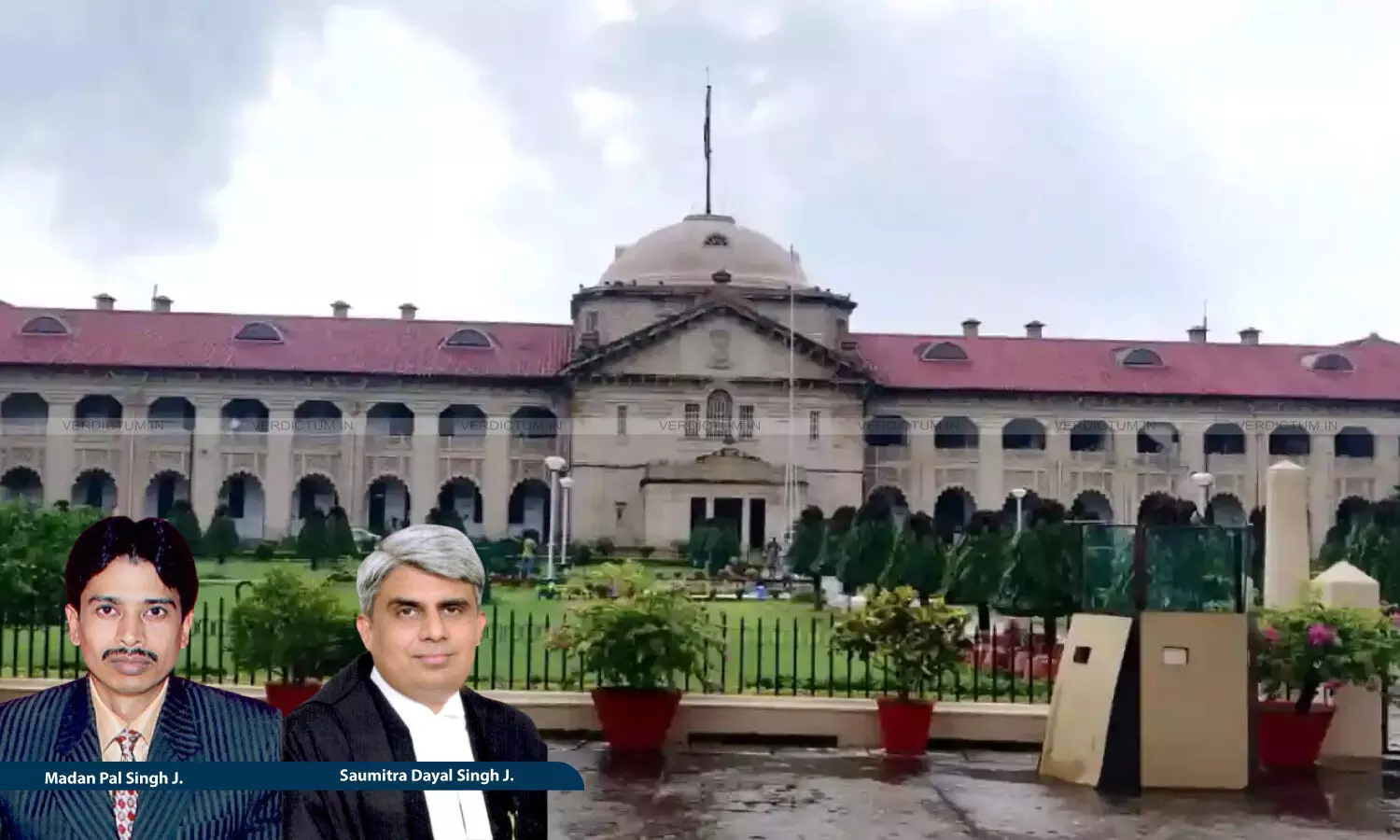
Evidence Of Exhortation Is A Weak Piece Of Evidence: Allahabad High Court Acquits Accused In Murder Case
 |
|The Allahabad High Court also held that mere presence at the spot of incidence was not sufficient to establish common intention.
The Allahabad High Court held that the evidence of exhortation is a weak piece of evidence and on such a weak piece of evidence, one cannot be convicted for such a heinous offence of murder on the test-beyond reasonable doubt.
The Appellant was charged under the offence of Section 34 IPC for having common intention to murder the deceased along with the main accused.
The Bench of Justice Madan Pal Singh and Justice Saumitra Dayal Singh observed, “From the law laid down in the above referred cases it can be deduced that evidence of exhortation is a weak piece of evidence. There is quite often a tendency to implicate some person, in addition to the actual assailant by ascribing to that person role of an exhortation to the assailant to assault the deceased by alleging his presence after accompanied with role of exhortation. Unless the evidence in this respect is clear, cogent and reliable, conviction may not be recorded against the person alleged to have exhorted the actual assailant, unless attending circumstances proven by the prosecution also establish either a covert or overt act or omission as may convince the Court as to existence of common intention.”
Advocate G.P Mathur represented the Appellant.
Case Brief
One Narendra inflicted injuries upon the deceased by knife and ran away with the Appellant. The contention of the Appellant was that the main allegation of causing knife injury to the deceased was against the co-accused Narendra, against whom the appeal has already been abated. The Appellant was only assigned the role of exhortation.
Further, it was contended that the prosecution has failed to prove that both the accused reached at the place of occurrence with premeditation of mind.
Court’s Analysis
The question before the Court was whether the Appellant had shared common intention with the principal offender to commit the murder of the deceased and if both the accused reached at place of occurrence after prior meeting of their mind and premeditation.
The Court noted that for the application of Section 34 I.P.C, in order to prove the common intention among the offenders, it was essential to establish that there must be prior meeting of their mind and to commit a crime in furtherance of common intention of all.
“A perusal of examination-in-chief of all the witnesses goes to show that before actual assault was committed by the co-accused Narendra, hot exchange of words had taken place between Narendra and deceased involving a woman who the deceased cared as his sworn sister and who the co-accused used to visit often indicates that there was no premeditation of mind between the present appellant and co-accused”, the Court said.
The Court was of the opinion that none of the eye witnesses has mentioned any active role of the Appellant except the role of exhortation. “Neither any role of having caused knife blows assigned to him nor any role of threatening the witnesses has been assigned while brandishing a knife… Although the F.I.R. is not an encyclopedia, but such details must find place in F.I.R. That deficiency goes to the root of the case. That role assigned to the present appellant was not of such a nature that could be ignored by the informant while submitting his written report. Thus, giving the role of whipping out his knife and threatening the witnesses and other witnesses is not free from all doubt. That deposition made in Court is not corroborated from the FIR. It is a material improvement made at the trial”, the Bench added.
The Allahabad High Court observed that mere presence of the Appellant at the spot was not sufficient to establish common intention of the Appellant.
With regard to the act of exhortation of the Appellant leading to the doing of a criminal act in furtherance of common intention, the Court observed that the evidence of exhortation is a weak piece of evidence.
“There is quite often a tendency to implicate some person, in addition to the actual assailant by ascribing to that person role of an exhortation to the assailant to assault the deceased by alleging his presence after accompanied with role of exhortation. Unless the evidence in this respect is clear, cogent and reliable, conviction may not be recorded against the person alleged to have exhorted the actual assailant, unless attending circumstances proven by the prosecution also establish either a covert or overt act or omission as may convince the Court as to existence of common intention”, the Court observed.
The Court also opined that the accused who only keeps the common intention in his mind, but does not commit any act or omission, cannot be convicted with the aid of section 34, IPC. Thus, to ascertain common intention, the totality of circumstances must be taken into consideration in arriving at the conclusion whether the accused had the such intention to commit an offence of which he could be convicted.
Accordingly, the Court allowed the appeal and set aside the conviction of the appellant.
Cause Title: Vijai@ Babban V. State of U.P. (Neutral Citation No. - 2025:AHC:134249-DB)